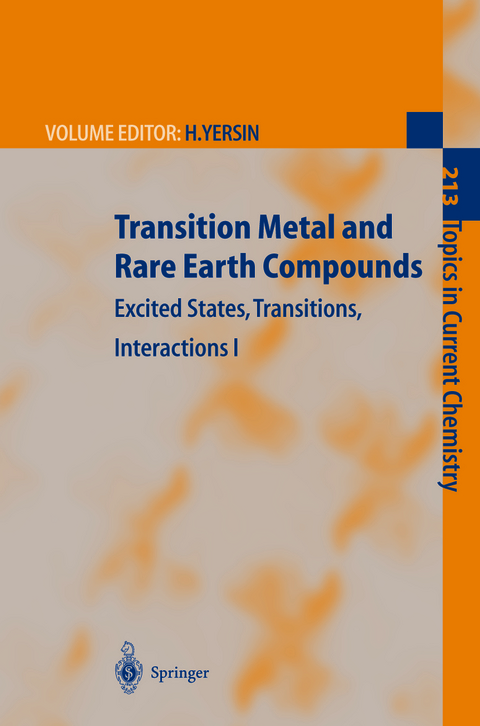
Transition Metal and Rare Earth Compounds
Excited States, Transitions, Interactions I
Seiten
2012
|
1. Softcover reprint of the original 1st ed. 2001
Springer Berlin (Verlag)
978-3-642-08758-5 (ISBN)
Springer Berlin (Verlag)
978-3-642-08758-5 (ISBN)
For a long time, the properties of transition metal and rare earth compounds have fascinated chemists and physicists from a scientific view-point, and more recently also their enormous potential as new materials has been explored. Applications in different fields have already been realized or are under c- rent investigation, for example, new laser materials, IR to visible upconversion systems, compounds for photolithographic processes, systems involving pho- redox processes for solar energy conversion, new photovoltaic devices, chemical sensors, biosensors, electroluminescent devices (OLEDs) for flat panel display systems, supramolecular devices with wide-range definable photophysical properties, materials for energy harvesting, optical information and storage systems, etc. Metal complexes are also highly important in biology and me- cine. Most of the applications mentioned are directly related to the properties of the electronic ground state and the lower-lying excited states. Metal complexes with organic ligands or organometallic compounds exhibit outstanding features as compared to purely organic molecules. For instance, metal compounds can often be prepared and applied in different oxidation states. Furthermore, various types of low-lying electronic excitations can be induced by a suitable choice of ligands, for example, such as metal-centered transitions (MC, e. g. d-d tran- tion), ligand-centered (LC, e. g. n-n ), metal-to-ligand-charge transfer (MLCT, e. g. d-7r ), intra-ligand-charge-transfer (ILCT) transitions,etc. In particular,the orbitals involved in the resulting lowest excited states determine the photoph- ical and photochemical properties and thus the specific use of the compound.
K.L. Bray: High Pressure Probes of Electronic Structure and Luminescence Properties of Transition Metal and Lanthanide Systems.- M. Glasbeek: Excited State Spectroscopy and Excited State Dynamics of Rh(III) and Pd(II) Chelates as Studied by Optically Detected Magnetic Resonance Techniques.- A. Vogler, H. Kunkely: Luminescent Metal Complexes. Diversity of Excited States.
| Erscheint lt. Verlag | 14.3.2012 |
|---|---|
| Reihe/Serie | Topics in Current Chemistry |
| Co-Autor | K.L. Bray, M. Glasbeek, H. Kunkely, a. Vogler |
| Zusatzinfo | X, 186 p. 2 illus. in color. |
| Verlagsort | Berlin |
| Sprache | englisch |
| Maße | 155 x 235 mm |
| Gewicht | 304 g |
| Themenwelt | Naturwissenschaften ► Chemie ► Anorganische Chemie |
| Schlagworte | Anorganische Chemie • Excited States • Inorganic Chemistry • Optical Spectroscopy • Optische Spektroskopie • Organic Chemistry • Organische Chemie • Physical Chemistry • Physikalische Chemie • rare earth compounds • Seltene Erden • Spectroscope • spectroscopy • transition metals • Übergangs • Übergangsmetalle • Übergangszustände |
| ISBN-10 | 3-642-08758-2 / 3642087582 |
| ISBN-13 | 978-3-642-08758-5 / 9783642087585 |
| Zustand | Neuware |
| Haben Sie eine Frage zum Produkt? |
Mehr entdecken
aus dem Bereich
aus dem Bereich
Buch | Hardcover (2024)
Springer Spektrum (Verlag)
CHF 89,95


